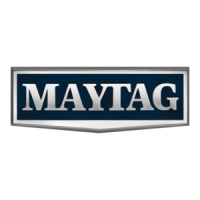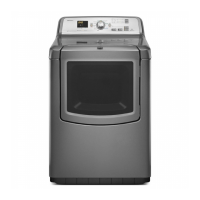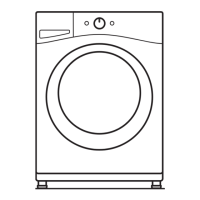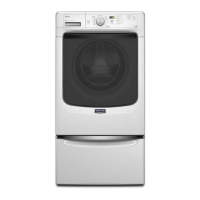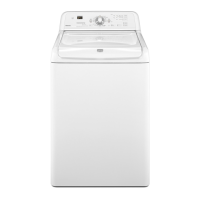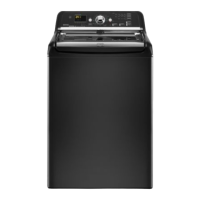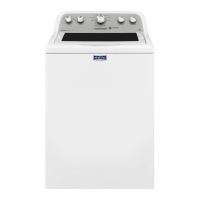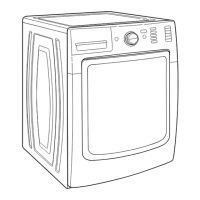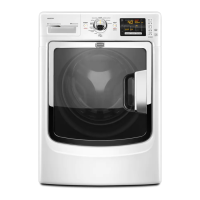A. Install these screws first.
6. Hang door by placing screw heads into top slotted holes of hinges and slide door down.
Align bottom screw holes in hinge and door. Install two bottom screws. Tighten all hinge
screws.
7. Close door to engage door strike.
Complete Installation
1. Check that all parts are now installed. If there is an extra part, go back through the steps to
see which step was skipped.
2. Ch
eck that you have all of your tools.
3. Dispose
of/recycle all packaging materials.
4. Check the dryer’s final location. Be sure the vent is not crushed or kinked.
5. Chec
k that the dryer is level. See “Level Dryer.”
6. In the U.S.A.
■ For power supply cord installation, plug into a grounded outlet. For direct wire
installation, turn on power.
In Canada
■ Plug into a grounded 4 prong outlet. Turn on power.
7. Remo
ve any protective film or tape remaining on the dryer.
NOTE: G
lass door models have a protective film on the window that should be removed.
8. Read “Dry
er Use.”
9. Wipe the dryer drum interior thoroughly with a damp cloth to remove any dust.
10. If
you live in a hard water area, use of a water softener is recommended to control the
buildup of scale through the water system in the dryer. Over time, the buildup of lime
scale may clog different parts of the water system, which will reduce product
performance. Excessive scale buildup may lead to the need for certain part replacement
or repair.
11. T
est dryer operation by selecting a Timed Dry heated cycle and starting the dryer. For this
test, do not select the Air Fluff modifier.
If the dryer will not start, check the following:
■ Controls are set in a running or “On” position.
■ Start button has been pushed firmly.
■ Dryer is plugged into an outlet and/or electrical supply is on.
■ Household fuse is intact and tight, or circuit breaker has not tripped.
■ Dryer door is closed.
This dryer automatically runs an installation diagnostic
routine at the start of its first cycle.
If you receive an “L2” code, there may be a problem with your home power supply keeping
the
dryer’s heater from turning on. See “Troubleshooting.”
If you receive an “AF” code, your dryer vent may be crushed or blocked.
See “Troubleshooting.”
NOTE: Y
ou may notice an odor when the dryer is first heated. This odor is common when the
heating element is first used. The odor will go away.
